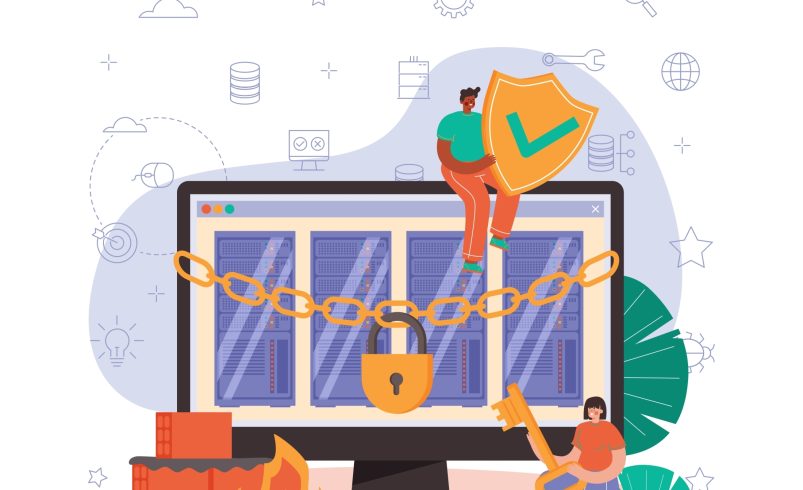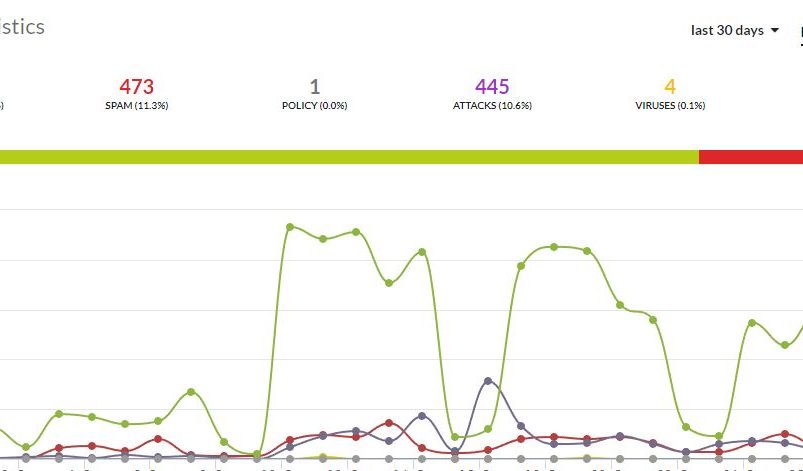
Why Website Security Matters even more in 2023
What is website security?
Website security refers to the measures taken to protect a website from unauthorized access, attacks, and data breaches. Website security is important because websites are vulnerable to various types of attacks, such as hacking, phishing, and malware, which can compromise the security of sensitive information, such as user data and financial information.
Website security can be achieved through various techniques and strategies, such as using strong passwords, encrypting data, implementing firewalls, updating software and plugins, monitoring traffic, and restricting access to sensitive information. Some specific techniques used to improve website security include using SSL/TLS certificates to secure data in transit, implementing two-factor authentication, scanning for vulnerabilities and malware, and using content delivery networks (CDNs) to protect against DDoS attacks.
Overall, website security is essential for protecting user information and maintaining trust with customers. It requires ongoing attention and proactive measures to stay ahead of evolving threats and ensure the integrity of the website and the data it holds.
How do I secure my website?
Securing a website involves a combination of proactive measures to protect it from potential security threats. Here are some steps you can take to secure your website:
- Use a strong password: Use a complex password that includes uppercase and lowercase letters, numbers, and special characters. Avoid using common passwords like “password123” or “admin.”
- Keep your software up to date: Keep your content management system (CMS), plugins, and themes up to date. This will help ensure that any known vulnerabilities are patched and that your website is less vulnerable to attacks.
- Implement SSL/TLS encryption: Implement SSL/TLS encryption to protect data in transit. This will help secure data between the user’s browser and your web server.
- Use a Web Application Firewall (WAF): A WAF is a security tool that filters out malicious traffic before it can reach your website. This helps protect your website against known attacks and can also block some zero-day exploits.
- Use two-factor authentication: Two-factor authentication provides an extra layer of security by requiring users to enter a code sent to their phone or email in addition to their password. This can help prevent unauthorized access to your website.
- Backup your website: Backup your website regularly to ensure that you can restore it in case of a data breach or other disaster. Store backups in a secure location.
- Use secure web hosting: Choose a web hosting provider that offers robust security features, such as intrusion detection and prevention, DDoS protection, and regular software updates.
- Educate yourself and your team: Educate yourself and your team about common security threats and best practices for securing your website. Stay up to date on the latest security news and patches to ensure that you are prepared for new threats.
By taking these steps, you can help protect your website from security threats and ensure the safety of your users’ data.
What are some examples of WordPress firewalls? And How much do they cost?
There are several WordPress firewall plugins available that can help secure your website. Here are some examples:
- Wordfence: Wordfence is a popular WordPress firewall and security plugin that includes a web application firewall, malware scanner, and login security features. It is available in both free and paid versions, with the paid version starting at $99 per year.
- Sucuri Security: Sucuri Security is a security plugin that includes a website firewall, malware scanner, and security hardening features. It is available in both free and paid versions, with the paid version starting at $199.99 per year.
- iThemes Security: iThemes Security is a security plugin that includes a variety of security features, including a web application firewall, malware scanner, and brute force protection. It is available in both free and paid versions, with the paid version starting at $80 per year.
- All In One WP Security & Firewall: All In One WP Security & Firewall is a security plugin that includes a variety of security features, such as a firewall, user login security, and database security. It is available for free on the WordPress plugin repository.
- MalCare is a WordPress security plugin and service that helps website owners protect their websites from security threats such as malware, hacking attempts, and brute force attacks. MalCare is designed to be easy to use, even for website owners with little technical knowledge.
The cost of these WordPress firewall plugins varies, with some being available for free and others requiring a paid subscription. The cost of the paid versions depends on the specific features included and the number of websites being protected. It’s important to consider the features offered by each plugin and the cost when choosing a WordPress firewall solution.
What are some examples of website application firewalls?
There are several website application firewall (WAF) solutions available in the market. Here are some examples:
- ModSecurity: ModSecurity is a popular open-source WAF that can be deployed on Apache and Nginx web servers. It includes a rule set that can be used to protect against common web application attacks.
- Cloudflare WAF: Cloudflare offers a WAF as part of its suite of security solutions. It can be used to protect websites against a wide range of threats, including OWASP Top 10 vulnerabilities, DDoS attacks, and bot traffic.
- Sucuri WAF: Sucuri is a website security company that offers a WAF as part of its suite of security solutions. It includes a rule set that can be used to protect websites against common web application attacks.
- Barracuda WAF: Barracuda offers a WAF as part of its web application security solutions. It includes a range of features, such as SSL offloading, content caching, and DDoS protection.
- Imperva WAF: Imperva offers a WAF as part of its suite of security solutions. It includes a rule set that can be used to protect websites against common web application attacks, as well as features such as DDoS protection and SSL offloading.
These are just a few examples of WAF solutions that are available. When choosing a WAF, it’s important to consider factors such as ease of use, cost, and the types of threats that the WAF is designed to protect against.
How much should I spend on security for my website?
The amount you should spend on security for your website depends on several factors, such as the size and complexity of your website, the sensitivity of the information you store, and the level of risk associated with your industry or market.
If you have a small website with basic functionality and no sensitive data, you may be able to rely on free or low-cost security solutions, such as a basic firewall and antivirus software. In this case, you might not need to spend more than a few hundred dollars per year.
However, if your website is more complex, with more advanced functionality and sensitive data, such as personal information, financial data, or intellectual property, you may need to invest in more robust security solutions. This could include a web application firewall, intrusion detection and prevention systems, and more comprehensive threat monitoring and incident response capabilities. In this case, you may need to spend several thousand dollars per year on security.
Ultimately, the cost of website security is a trade-off between the level of protection you require and the budget you have available. It’s important to assess your website’s security risks and vulnerabilities, and consider the potential consequences of a security breach when deciding how much to spend on security.


